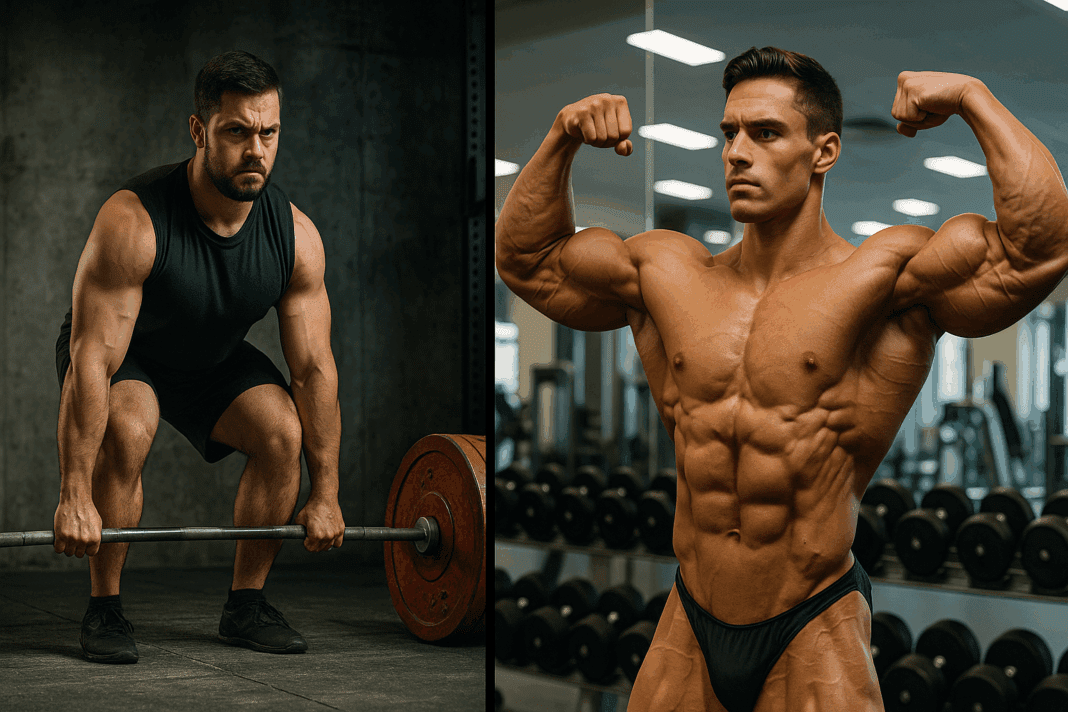Introduction: Why Strength vs Muscle Is the Foundation of All Training Goals
When stepping into the world of fitness, many individuals grapple with a fundamental yet often misunderstood debate: strength vs muscle. Although these two concepts are closely intertwined and frequently develop alongside each other, they represent distinct physiological adaptations and training outcomes. Strength refers to the ability to generate force, while muscle growth—or hypertrophy—focuses on the enlargement of muscle fibers. Understanding how these differ is essential for crafting a training program that matches your unique goals, whether it’s peak performance, aesthetic development, or a combination of both. Navigating the science and strategy behind strength vs muscle enables you to make informed decisions that maximize results and minimize wasted effort in the gym.
You may also like: The Ultimate Hypertrophy Workout Program for Building Strength and Size
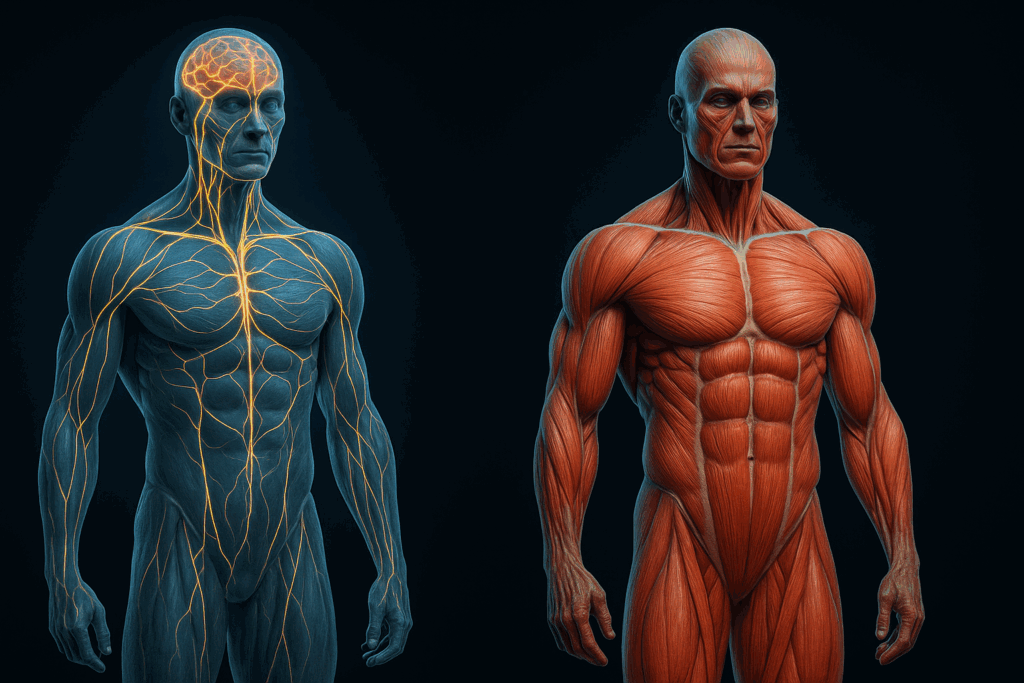
The Core Difference Between Strength vs Muscle and Why It Matters
Strength is primarily a neuromuscular function. It’s your body’s capacity to produce maximal force against resistance, and this ability is influenced heavily by how efficiently your brain and nervous system communicate with your muscles. Improvements in strength can occur even without a corresponding increase in muscle size, especially among beginners. In contrast, muscle growth—or hypertrophy—is a structural change in the muscle itself. It’s the thickening and expansion of muscle fibers due to consistent resistance training, adequate nutrition, and proper recovery. Recognizing the strength vs muscle distinction helps you understand why some individuals can lift heavy weights without looking particularly muscular and vice versa. The direction you choose—whether building strength, growing muscle, or both—will define your training variables, including sets, reps, intensity, and rest periods.
Understanding Strength Training vs Weight Lifting: Terminology That Shapes Your Progress
There’s often confusion between strength training vs weight lifting. While they may seem interchangeable, each carries a specific implication. Strength training refers to any training designed to improve your ability to exert force. This includes not just lifting weights but also performing resistance exercises with body weight, resistance bands, or machines. On the other hand, weight lifting—especially in its competitive context—refers to Olympic lifts such as the snatch and clean & jerk. In general gym culture, it often simply means using barbells or dumbbells. Strength training typically involves compound movements like deadlifts and squats, aimed at maximizing force production. Understanding the subtle difference between strength training vs weight lifting can help you refine your approach depending on whether you prioritize function, performance, or physique.
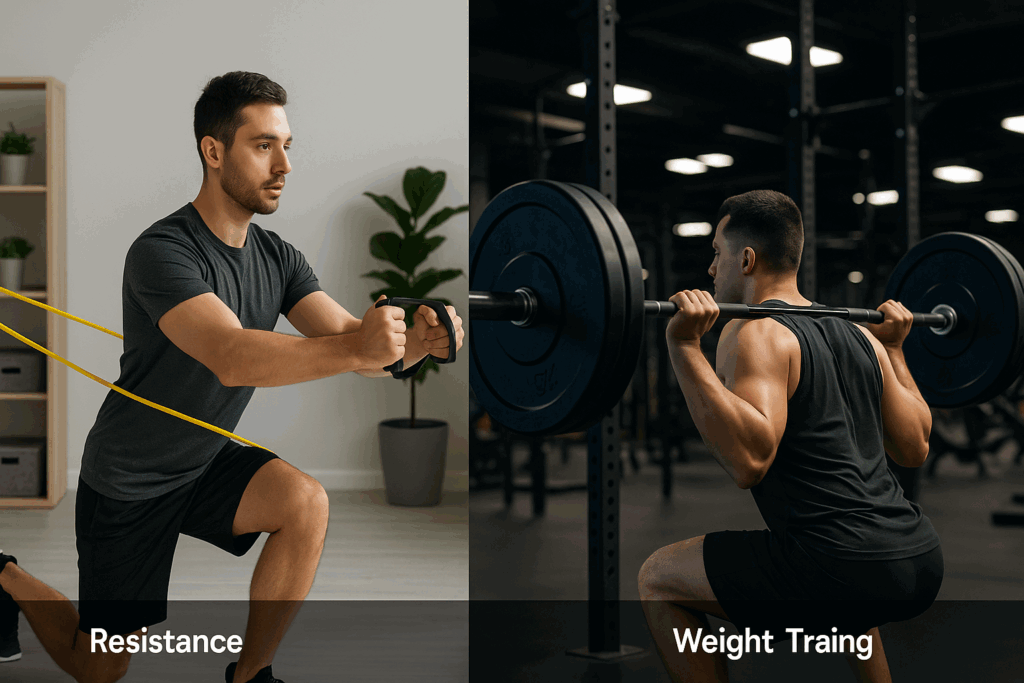
Breaking Down Resistance Training vs Weight Training: What They Mean for Muscle Growth
When comparing resistance training vs weight training, it’s important to understand the breadth of tools available. Resistance training encompasses all forms of resistance, including elastic bands, cables, bodyweight exercises, and free weights. Weight training is a subcategory, focusing primarily on using barbells, dumbbells, or machine-based weights. Both methods can lead to muscle growth if they apply sufficient tension to the muscle over time. However, resistance training may be more versatile for certain populations, such as beginners or individuals in rehabilitation, due to its adaptability and lower injury risk. Weight training allows for greater loading, which may better support hypertrophy in more advanced lifters. When it comes to maximizing muscle growth, integrating both resistance training and weight training in a structured program ensures a diverse stimulus and well-rounded development.
The Neurological Edge: How Strength Gains Don’t Always Mean Bigger Muscles
A common misconception in fitness circles is that strength is directly proportional to muscle size. However, the reality is that neurological adaptations account for much of the strength gain, especially in the early stages of training. Your central nervous system becomes more efficient at recruiting motor units, firing muscle fibers simultaneously, and synchronizing contractions to produce greater force. This explains why someone with modest muscle size might still lift heavier weights than a visibly larger individual. Strength gains are often the result of improved coordination, increased firing rate of neurons, and desensitization of inhibitory mechanisms that normally limit force production. This neurological edge underpins the strength vs muscle debate and illustrates why performance and appearance don’t always align perfectly.
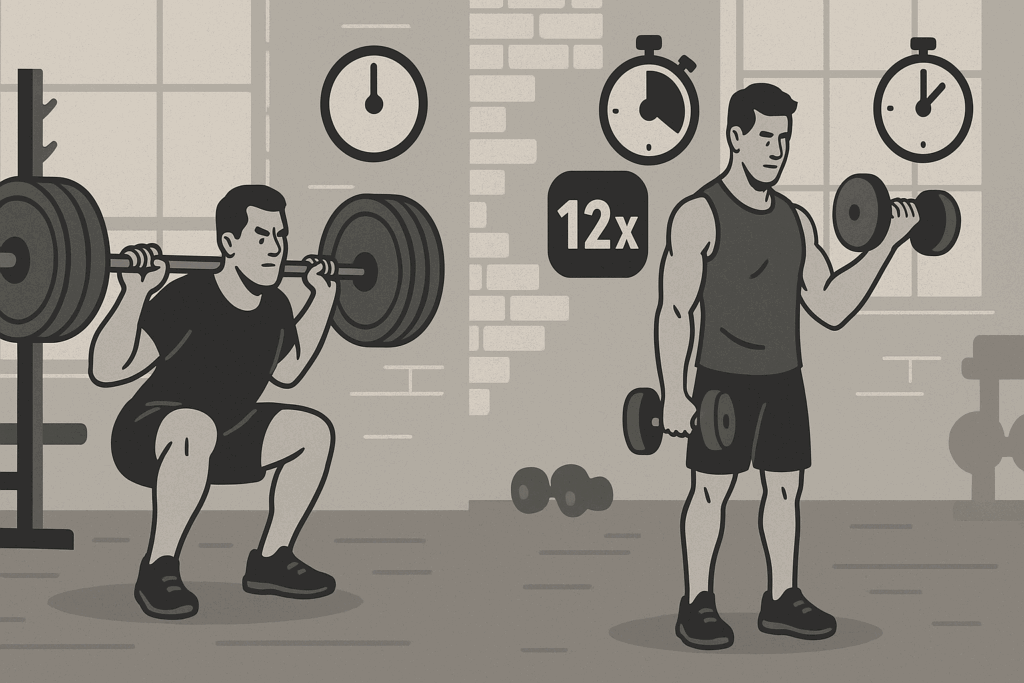
Exploring Strength vs Muscle Mass: The Role of Training Variables
Training for strength vs muscle mass requires adjusting critical training variables such as intensity, volume, and rest periods. Strength-focused programs generally use heavier loads (above 85% of 1RM), fewer repetitions (1-6 reps), and longer rest intervals (2-5 minutes) to optimize neural efficiency and recovery. Conversely, muscle-building programs prioritize moderate loads (65–85% of 1RM), higher reps (8-15), and shorter rest periods (30–90 seconds) to increase time under tension and promote metabolic stress. While both methods can yield improvements in strength and size, the specificity of your program will dictate which adaptation dominates. For individuals with aesthetic goals, focusing on hypertrophy protocols may be more effective, whereas athletes requiring maximal force output should emphasize strength-based schemes.
Genetics, Fiber Types, and the Individual Nature of Strength vs Muscle
Not all bodies respond to training in the same way. Genetic predisposition plays a major role in determining how quickly and efficiently someone gains strength or muscle. Muscle fiber composition is a crucial factor. Type II fibers, which are fast-twitch and more powerful, are better suited for strength and explosive movements. They also have higher growth potential. Type I fibers, which are slow-twitch, are more resistant to fatigue and dominant in endurance athletes but are less prone to hypertrophy. Tendon insertions, limb length, and even muscle belly shape can affect leverage and how strength is expressed. These factors help explain why two individuals following identical programs can experience very different outcomes in strength vs muscle mass development.
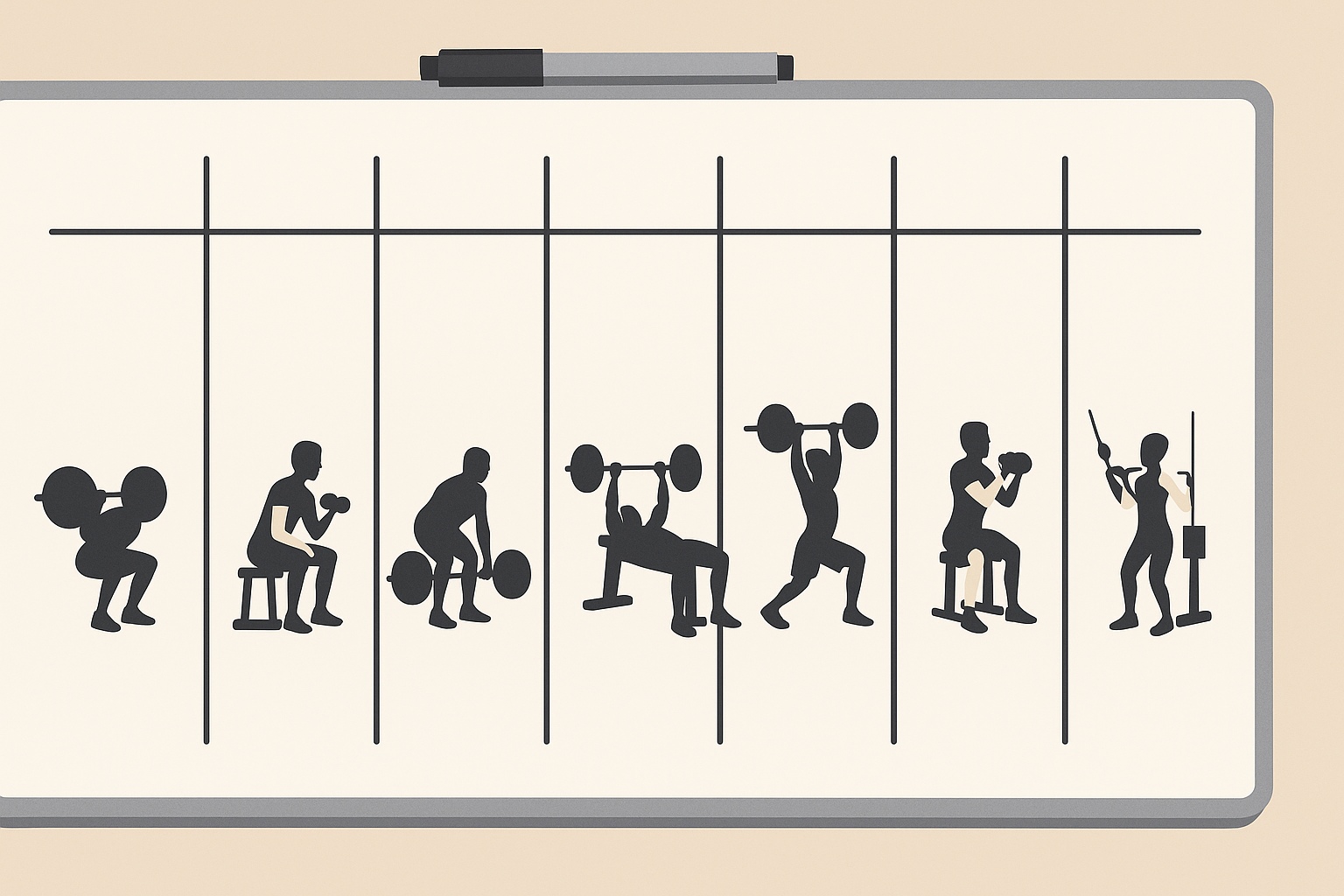
Programming for Both: Can You Build Strength and Muscle Simultaneously?
The answer is yes—but with careful programming. Hybrid programs allow for concurrent development of strength and hypertrophy, typically through a combination of heavy compound lifts and higher-rep accessory work. This approach aligns well with undulating periodization, which varies intensity and volume within a single training week. For example, one day might emphasize heavy deadlifts for strength, while another focuses on Romanian deadlifts at moderate weight for hypertrophy. This style of programming allows your nervous system and musculature to adapt together, promoting both performance and size. Balancing strength vs muscle training in this way ensures you avoid plateaus and maintain motivation by progressing in multiple domains.
Resistance Training vs Weight Lifting for Long-Term Gains: Which Is More Sustainable?
When considering the longevity of your training routine, resistance training vs weight lifting becomes an essential conversation. Resistance training offers flexibility and lower joint stress, making it more sustainable for older adults or individuals recovering from injury. It allows for greater control of movement and tension across various angles and ranges of motion. Weight lifting, while effective and efficient for muscle loading, can be taxing on joints and connective tissue over time—especially when poor form or inadequate recovery are involved. Sustainability depends not just on effectiveness but also on injury prevention, enjoyment, and adaptability. Including resistance bands, machines, and bodyweight exercises alongside free weights provides both challenge and joint-friendly alternatives for long-term success.
Balancing Recovery and Adaptation: The Often-Ignored Key to Strength vs Muscle Success
No matter how well-designed your program is, progress in strength vs muscle development cannot occur without adequate recovery. Strength training places heavy demands on the nervous system and requires longer rest between sessions. Muscle-focused workouts, while less neurologically taxing, accumulate fatigue from higher volumes and time under tension. Recovery includes more than just rest days. It encompasses quality sleep, proper nutrition, hydration, and active recovery techniques such as foam rolling and light aerobic activity. Neglecting these factors can lead to overtraining syndrome, stalling progress, or increasing injury risk. Periodic deload weeks or changes in intensity help maintain momentum and preserve long-term progress.
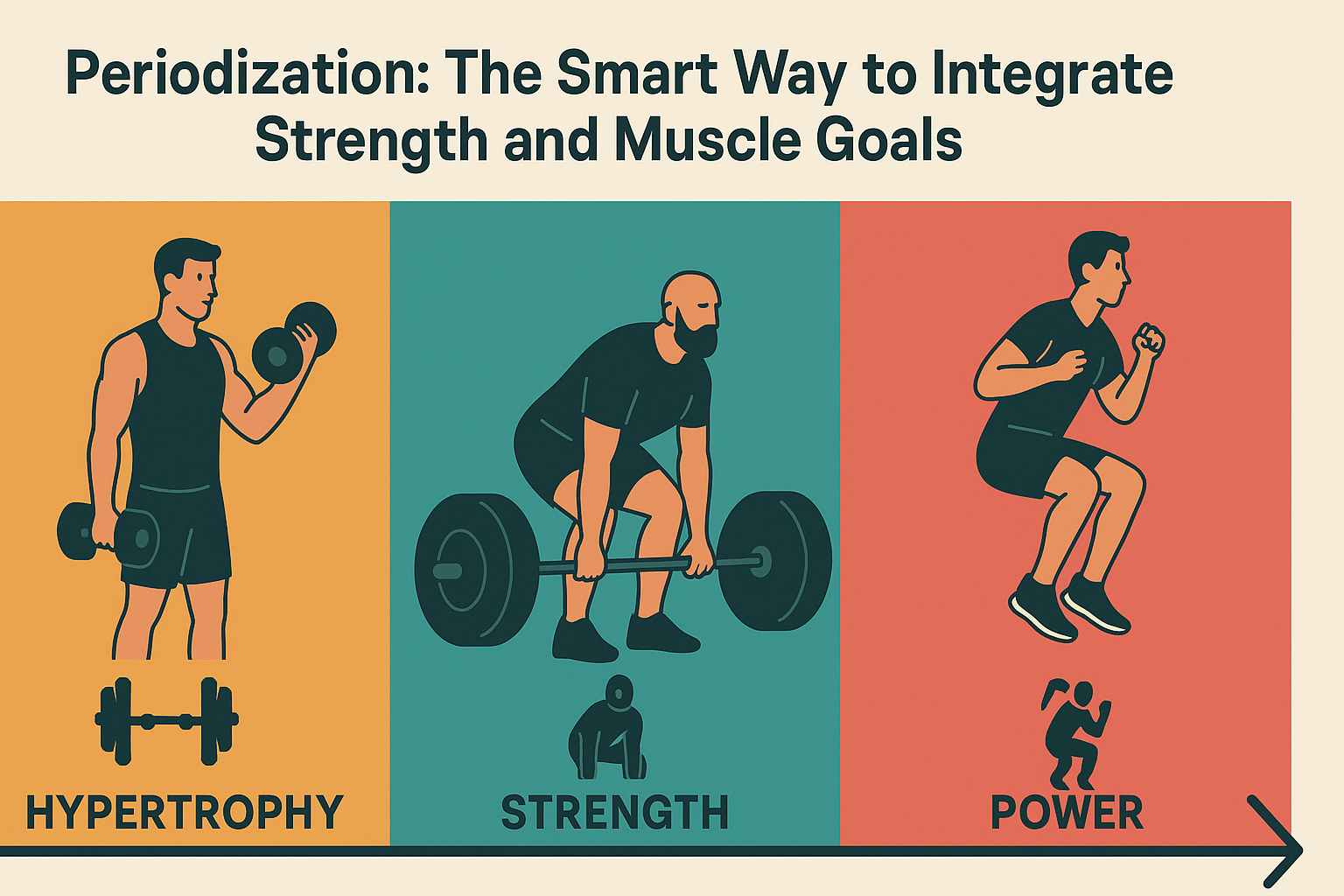
Periodization: The Smart Way to Integrate Strength and Muscle Goals
To effectively train for both strength and hypertrophy, periodization is crucial. Linear periodization gradually increases intensity while reducing volume, peaking strength over time. Nonlinear or daily undulating periodization alternates between high-rep, moderate-rep, and low-rep days, allowing for simultaneous development of multiple fitness attributes. Block periodization divides training into focused phases: hypertrophy blocks with higher volume, strength blocks with lower reps and heavier loads, and power blocks emphasizing explosive movements. This approach keeps your body guessing, prevents adaptation plateaus, and supports balanced progress. Whether your goal is performance, aesthetics, or both, periodization aligns with your physiology and keeps your training purposeful and dynamic.
Frequently Asked Questions: Strength vs Muscle and Advanced Training Strategies
What’s the psychological difference in training for strength vs muscle?
Training for strength vs muscle often triggers different psychological mindsets. Strength-focused individuals tend to measure progress by objective performance metrics—such as improving their one-rep max or beating previous lift records—which can provide clear motivation. In contrast, those training for muscle growth often rely on visual progress and subjective assessments of size or symmetry, which can be influenced by lighting, hydration, and personal perception. This difference in feedback mechanisms can affect consistency and motivation levels. Individuals who thrive on quantifiable wins may find strength training more rewarding, while those who enjoy sculpting their physique might prefer hypertrophy-focused routines. Incorporating elements from both approaches can create a more balanced mindset, reducing burnout and enhancing long-term adherence.
How does sleep quality influence strength vs muscle progress?
Sleep is a non-negotiable factor in both strength vs muscle development, yet its mechanisms differ slightly for each. Deep sleep stages are when the body releases the highest levels of growth hormone, a key player in muscle repair and hypertrophy. Simultaneously, quality sleep improves cognitive function and neuromuscular coordination, which are critical for progressing in strength training. Inadequate sleep has been shown to impair glucose metabolism, reduce testosterone levels, and increase cortisol—factors that collectively hinder both muscle growth and performance. For those comparing strength training vs weight lifting outcomes, prioritizing sleep can amplify returns in both domains by accelerating recovery and enhancing training output. Athletes and gym-goers alike should treat sleep hygiene as a foundational pillar of success, not a passive recovery element.
Can you effectively train for both strength and hypertrophy without periodization?
While it’s technically possible to gain both strength and muscle simultaneously without a formal periodization plan, it’s not the most efficient route. Periodization strategically varies volume and intensity, allowing you to avoid plateaus and reduce overtraining risks. Without it, you risk overemphasizing one quality at the expense of the other. For example, consistently lifting in a moderate rep range may provide hypertrophy benefits but fail to maximize strength adaptations. Periodized training also offers psychological benefits by breaking the monotony and providing goal-focused cycles. Whether you’re comparing resistance training vs weight lifting or integrating strength training vs weight training philosophies, using periodization enhances outcomes across all variables.
What role does nutrition periodization play in strength vs muscle programs?
Just as training benefits from structured variation, so does nutrition—especially when managing strength vs muscle priorities. Nutrition periodization involves aligning calorie intake, macronutrient distribution, and supplementation with your current training phase. During strength-focused blocks, a slight caloric surplus with a higher carbohydrate ratio can fuel heavier lifts and support CNS recovery. In hypertrophy phases, maintaining a lean bulk with precise protein timing helps optimize muscle protein synthesis. Some athletes even adopt mini-cuts during volume phases to manage fat gain without sacrificing muscle. Whether comparing strength training vs weight lifting or managing resistance training vs weight training cycles, adapting your diet to the training objective enhances overall effectiveness and recovery.
How can tempo manipulation improve strength vs muscle outcomes?
Tempo—the speed at which you perform reps—can significantly influence whether you’re training for strength vs muscle hypertrophy. A controlled eccentric (lowering) phase increases time under tension, which is beneficial for muscle growth. In contrast, explosive concentric phases improve neural drive, a key component of strength development. Advanced trainees often manipulate tempo to overcome plateaus or emphasize weak points in a lift. For example, pausing at the bottom of a squat can enhance stability and motor control, useful for both powerlifting and bodybuilding. Understanding these nuanced adjustments allows you to bridge resistance training vs weight lifting benefits more strategically, especially when combined with variations in load and volume.
Why is grip strength an underrated factor in strength vs muscle performance?
Grip strength serves as a foundational component in numerous compound lifts and can often become the limiting factor in pulling movements. In the context of strength vs muscle goals, underdeveloped grip strength can hinder both maximal lifts and volume-based hypertrophy sets, particularly in exercises like deadlifts, rows, and pull-ups. Enhancing grip strength through dedicated training—such as farmer’s carries or thick-bar work—can improve lifting mechanics and reduce reliance on straps. Moreover, grip fatigue tends to accumulate over the course of a session, so addressing it can significantly improve training density. This is particularly relevant when evaluating resistance training vs weight training programs that include high-repetition pulling work. Developing a strong grip contributes not only to better performance but also to injury prevention and long-term progress.
What are the long-term joint health implications in strength vs muscle-focused training?
The mechanical stress placed on joints varies between strength vs muscle programming, and this has long-term implications for joint integrity. Strength training often involves heavy loads with fewer reps, placing high stress on tendons and ligaments. Over time, this can lead to wear and tear if not balanced with proper mobility and prehab work. Hypertrophy training, with its higher volume and lighter loads, generally distributes joint stress more evenly but can still lead to overuse injuries if excessive volume or poor form is involved. Comparing strength training vs weight lifting philosophies shows that strength athletes must be especially diligent with warm-ups, deloads, and joint support. Adding elements of resistance training vs weight training—such as band work or isometric holds—can support joint longevity while maintaining progress in both performance and aesthetics.
How does emotional resilience factor into strength vs muscle progression?
Emotional resilience—your capacity to manage stress, setbacks, and mental fatigue—plays a pivotal role in training success. For those pursuing strength vs muscle goals, progress often involves fluctuations, plateaus, and even regressions, which can be demotivating. Strength training tends to involve high psychological arousal due to the intensity of the lifts, requiring focus and mental toughness. Conversely, muscle growth efforts often demand patience and consistency, as changes are less immediately visible. Building emotional resilience can be achieved through journaling, meditation, or simply reframing failure as feedback. Understanding how mental endurance affects your consistency is as vital as mastering periodization, especially in long-term comparisons like resistance training vs weight lifting or strength vs muscle mass programs.

What technological innovations are changing how we train for strength vs muscle?
Technology is revolutionizing the way athletes approach strength vs muscle training through data-driven platforms and AI-powered programming. Wearable devices now track not only volume and heart rate but also recovery metrics like HRV (heart rate variability), which can help determine readiness for heavy strength sessions. Velocity-based training tools provide real-time feedback on bar speed, allowing athletes to adjust loads to maintain optimal neural stimulus. Apps and platforms using machine learning are beginning to customize resistance training vs weight training routines based on individual fatigue levels, performance history, and genetic factors. These tools allow for more precise adaptation and reduce the guesswork in programming. Integrating these innovations enhances how we apply traditional concepts like strength training vs weight lifting into a more modern, personalized framework.
How does community environment influence strength vs muscle commitment?
The social setting in which you train can have a profound impact on adherence and motivation—especially when differentiating between strength vs muscle goals. Strength-oriented communities often revolve around camaraderie, shared goals like hitting PRs, and the adrenaline of competition. Muscle-focused environments might prioritize aesthetics, form critiques, and nutrition discussions. Joining a community aligned with your goals—whether in person or through online platforms—can enhance accountability and satisfaction. For example, someone in a resistance training vs weight training setting might benefit from a mentor or group that understands how to integrate both modalities. Surrounding yourself with like-minded individuals can significantly affect your mental framework, support systems, and ultimately, the results you achieve in either domain.
Conclusion: Mastering Strength vs Muscle for a Lifetime of Gains
Understanding the difference between strength vs muscle is more than an academic exercise—it’s a practical roadmap for achieving lasting results in your training. Whether you’re driven by the desire to lift heavier weights, build a symmetrical and muscular physique, or simply stay healthy and strong as you age, acknowledging the nuances between these two goals will transform how you train. The interplay between resistance training vs weight lifting and the careful application of principles like periodization, recovery, and exercise selection create the conditions necessary for both strength and muscle growth to flourish. Rather than choosing one over the other, integrating both into your routine leads to a more balanced, adaptable, and resilient body. Let your goals guide your methods, but keep the broader picture in mind: strength and muscle are not enemies, but powerful allies in your pursuit of fitness excellence.
Further Reading:
Strength Training vs. Resistance Training: Which Is Right for You?


